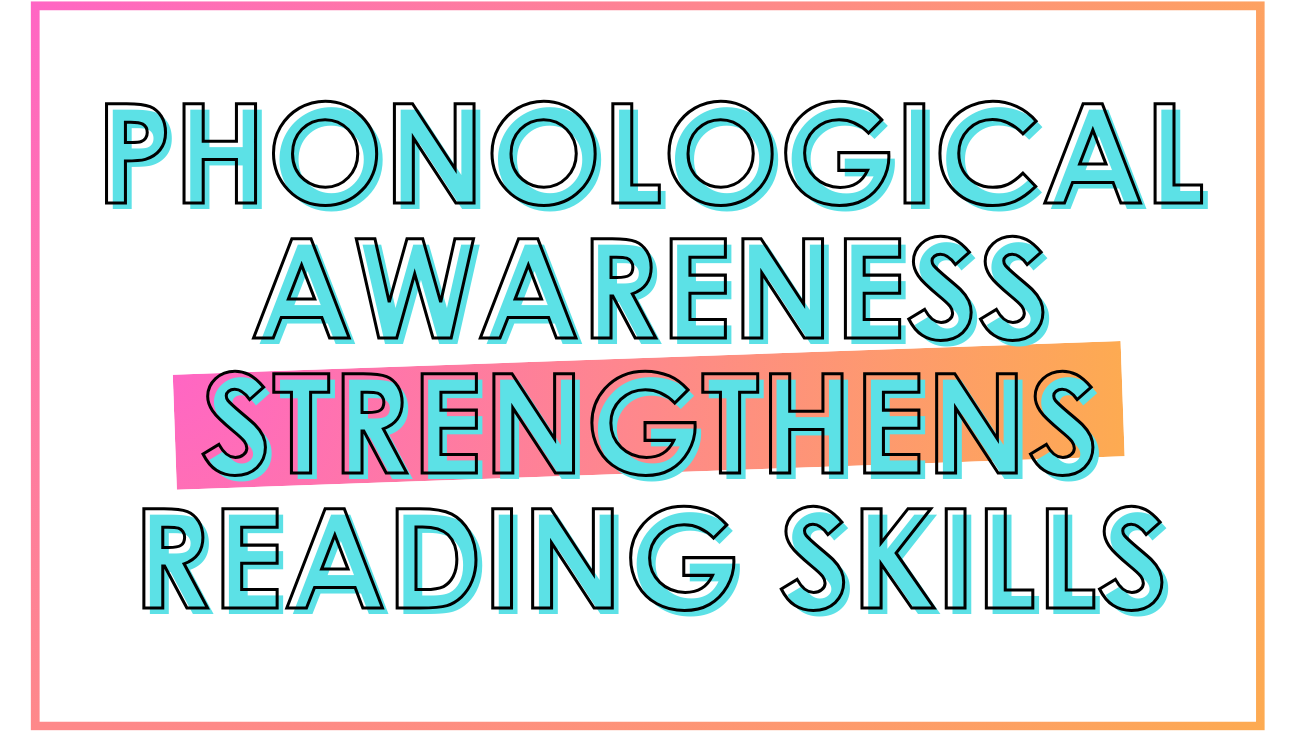
How Phonological Awareness Strengthens Reading Skills in Middle School ELA
Phonological awareness is the ability to recognize and manipulate the sounds in spoken language. This skill is foundational for reading and plays a significant role in helping students decode words, spell correctly, and develop overall reading proficiency.
Why Does It Matter?
Phonological awareness is made up of two main components: phonological sensitivity and phonemic awareness. Phonological sensitivity involves larger sound units like syllables, words, or parts of speech, while phonemic awareness deals with the smallest individual sounds (phonemes). It might sound elementary, but phonological awareness is vital for middle school students, even if they’re already reading at grade level.
In fact, research shows that poor phonological awareness can lead to significant reading difficulties. So, it’s important for all teachers, not just elementary educators, to address this skill. Even if your students can read fluently, understanding how sounds work in words is key for improving comprehension and vocabulary.
How Phonological Awareness Relates to Poetry
While phonological awareness can seem more relevant for younger learners, middle school teachers can incorporate it into their existing lesson plans, especially through poetry. Poems often contain rhyming words, alliteration, and other sound devices that can help students develop their awareness of how sounds fit together. And what better way to teach these concepts than through fun, engaging activities?
Here are ten creative ways you can incorporate phonological awareness into your classroom while reading and writing poetry:
1. Identify and Highlight Sound Patterns
Have students identify and highlight examples of sound patterns like assonance (repeated vowel sounds), consonance (repeated consonant sounds), and alliteration (repeated initial consonant sounds) in the poems they read. This exercise helps them focus on the sound units in words.
2. Rhyme Recognition and Creation
Encourage students to find rhyming words in poems and create their own rhyming pairs. This practice strengthens their ability to recognize and work with similar sounds.
3. Funny Poem Revisions
Ask students to replace the rhyming words in a poem with new rhyming pairs and read their funny creations to the class. This activity allows them to manipulate sounds and explore language in a fun way.
4. Clap Out Syllables
Have students clap out the syllables in each line of a poem to practice identifying the rhythmic structure of language. This is a great way to tie phonological awareness to rhythm and timing.
5. Onset and Rhyme Activities
Help students break words in poems into their onset (the initial sound) and rhyme (the rest of the word) to analyze sound patterns. This technique deepens their understanding of how sounds work together.
6. Write Sound-Focused Poems
Encourage students to write their own poems that feature specific sound devices like alliteration or consonance. This not only builds phonological awareness but also allows for creative expression.
7. Write Poems with a Rhyme Pattern
Challenge students to identify the rhyme pattern of a poem and then write their own poem following that pattern. This task helps them understand how sound and structure work together in poetry.
8. Read Aloud for Sound
Have students read poems aloud, emphasizing the sounds, rhymes, and patterns they hear. This reinforces the connection between spoken and written language.
9. Create a Sound Collage
Ask students to create a collage of images that represent different sounds from the poem. They can focus on beginning, middle, or end sounds, and even create rhyming pairs. Then, challenge them to write a poem incorporating these sounds.
10. Create Sound Maps
Let students create visual maps to represent the sound patterns they notice in a poem. For example, they can color-code alliteration in one color and assonance in another. This hands-on activity helps them engage visually and creatively with sound patterns.
Tips for Success: Teach Sound Devices Explicitly
As you work through these activities, consider whether you want to explicitly teach sound devices like assonance and consonance or simply dive right into the poem itself. While you could skip the definitions and allow students to explore these concepts organically, teaching them upfront ensures that all students are on the same page. This is especially true for older students who may have a deeper understanding of language.
Final Thoughts
By incorporating phonological awareness activities into your poetry lessons, you’re helping your students strengthen their reading and writing skills in an enjoyable and creative way. Whether you’re focusing on rhyme, alliteration, or phonemic awareness, these simple activities can have a big impact on your students’ reading development.
To learn more about this topic, check out our podcast Teaching Middle School ELA.
Phonological Awareness
LEARN MORE ABOUT OUR COMPREHENSIVE ELA CURRICULUM!
The EB Teachers’ ELA Portal is an exclusive membership for Middle School ELA Teachers in Grades 5-8 who are ready to streamline their planning process — while increasing student engagement and learning outcomes (and having fun along the way)!
Ready to feel good about teaching again?
*School and District Partnerships are also available at https://schools.ebacademics.com/eb-all-access*

